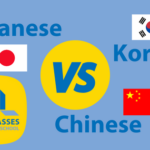Japanese Loanwords 🤩 41 Fun Examples with Pronunciation
Learn 41 Japanese Loanwords // Learning Languages Isn’t Always As Difficult As You Think

What Do “Ice Cream,” “Salaryman,” and “Anime” Have in Common?
If you’ve ever come across a Japanese word that sounded suspiciously familiar—like aisukurīmu アイスクリーム or sarariiman サラリーマン —you’ve already met the world of Japanese loanwords.
Known as gairaigo 外来語 , these borrowed words come from English and beyond, and they’re everywhere in modern Japanese. Some keep their original meanings, others take on a life of their own—and a few might surprise you altogether.
In this blog, we’re diving into the curious, creative, and sometimes confusing world of Japanese loanwords to see how other languages sneak into daily conversations in Japan.
Japanese Loanwords || How are Loanwords Written?
Japanese Loanwords || English to Japanese Loanwords
Japanese Loanwords || Countries as Loanwords
Japanese Loanwords || (Less Obvious!) English to Japanese Loanwords
Japanese Loanwords || Japanese to English Loanwords
Japanese Loanwords || FAQs
How are Loanwords Written?
One of the fun things about Japanese loanwords is that they’re often easier to recognize than you might think—and that’s all thanks to how they’re written.
In Japanese, loanwords (gairaigo, 外来語) are almost always written using katakana (カタカナ), one of the three Japanese alphabets.
Unlike hiragana (ひらがな), which is used for native grammar and vocabulary, or kanji (漢字), which represents Chinese characters, katakana is reserved for foreign words, names, onomatopoeia, and a few other special cases.
👉 That means when you see katakana, there’s a good chance the word came from another language.
Take the word communication, for example. Not exactly a beginner-friendly word, right? But in Japanese, it becomes:
Communication コミュニケーション (komyunikēshon)

At first glance, the katakana might seem a bit intimidating—but listen to how it’s pronounced out loud.
It sounds almost exactly the same as in English!
That’s the magic of loanwords: once you start listening more than reading, you’ll be surprised how many words you already “know” in Japanese.
So, not only do loanwords help bridge the gap between languages, they’re also great for boosting your motivation. They remind you that even with all the differences between English and Japanese, there are still connections—and that makes learning feel a little less overwhelming (and a lot more fun).



English to Japanese Loanwords
To help you get a feel for how loanwords look and sound in Japanese, here’s a quick list of common ones you’ll hear in everyday conversation. Notice how they’re written in katakana and how closely their pronunciation matches the original English word.
| English | Japanese (Katakana) | Pronunciation |
|---|---|---|
| Air Con | エアコン | Eakon |
| Bar | バー | Bā |
| Beer | ビール | Bīru |
| Butter | バター | Batā |
| Calendar | カレンダー | Karendā |
| Camera | カメラ | Kamera |
| Elevator | エレベーター | Erebētā |
| Glass | ガラス | Garasu |
| Ice Cream | アイスクリーム | Aisukurīmu |
| Image | イメージ | Imēji |
| Juice | ジュース | Jūsu |
| Story | ストーリー | Sutōrī |
| Supermarket | スーパー | Sūpā |
| TV | テレビ | Terebi |



Countries as Loanwords

In Japanese, many country names are borrowed directly from their English or native speaker counterparts and written in katakana.
While the pronunciation often closely resembles the original, there are some fun variations and slight changes.
Check out this list of countries and their Japanese names—perfect for adding to your language learning toolkit!
| Country | Japanese (Katakana) | Pronunciation |
|---|---|---|
| America | アメリカ | Amerika |
| Italy | イタリア | Itaria |
| Holland / The Netherlands | オランダ | Oranda |
| Canada | カナダ | Kanada |
| Spain | スペイン | Supein |
| Germany | ドイツ | Doitsu |
| France | フランス | Furansu |
(Less Obvious!) English to Japanese Loanwords
Rollercoaster
Rollercoaster
ジェットコースター[Jetto kōsutā]
In Japanese, roller coaster became jet coaster (ジェットコースター). The word “jet” ジェット[Jetto] is also a loanword from English, which fits perfectly with the fast, thrilling image of the ride!
Corn Dog
Corn Dog
アメリカンドッグ[Amerikan doggu]
Don’t mistake the ‘Amercan dog’ for a hotdog – it actually means corn dog! That’s because corn dogs are seen as a more western style of hotdog for Japanese people. Also, in Japan, corndogs are made with wheat flour and not corn flour, so it makes more sense to drop the ‘corn’!

Dress

Dress
ワンピース (“One Piece”)
[Wanpīsu]
Not to be confused with the Japanese anime One Piece! Wanpīsu, or “One Piece”, essentially refers to an all-in-one dress – one piece! No need for tops, trousers and skirts.
BONUS LOANWORD – the word for Skirt in Japanese is スカート [Sukāto] – very, very similar to the spoken English version!
Consent (?)
This is a curious example that does not translate simply to “consent” but actually to “electrical outlet”.
Electrical outlet
コンセント[Konsento]
Going back around 100 years or so these electrical outlets were circular and therefore known as “concentric plugs”. So this one makes sense with some context behind it!

Japanese vs Korean vs Chinese | Which Is Really The Hardest?
Thinking about learning an East Asian language and don’t know which one to go for? Japanese vs Korean vs Chinese – it’s a tough choice right?!
Japanese to English Loanwords
We must also remember it works both ways.
English has pinched a number of words from Japanese that we use day to day, which include:
| English | Japanese (Kanji & HIRAGana) | Pronunciation |
|---|---|---|
| Dojo | 道場 どうじょう | Dōjō |
| Emoji | 絵文字 えもじ | Emoji |
| Judo | 柔道 じゅうどう | Jūdō |
| Karaoke | カラオケ からおけ | Karaoke |
| Manga | 漫画 まんが | Manga |
| Ramen | ラーメン らーめん | Rāmen |
| Sumo | 相撲 すもう | Sumo |
| Sushi | 寿司 すし | Sushi |
| Teriyaki | 照り焼き てりやき | Teriyaki |
| Tsunami | 津波 つなみ | Tsunami |
| Wasabi | 山葵 わさび | Wasabi |
It’s easy to forget where words come from when they become so embedded into a culture. Loanwords are truly everywhere in all languages across the world.


Hopefully this short article proves that learning any language doesn’t have to be as intimidating as it looks.
Sure, everything appears different on paper but sometimes, you get that lovely surprise when speaking, that words really can travel the world!
If you like getting to know loanwords like we do… good, because we’ve got a few of other additions also!
- Vietlish – Learn Vietnamese Loanwords
- Konglish – Learn Korean Loanwords
- Loanwords in Mandarin – Learn the Chinese Loanwords
- Korean Words in the English Dictionary – Check out 26 New words in Korean that made it into the Collins English Dictionary!
- Russian – 20+ words in Russian that you already know
Are there anymore Japanese loanwords you want to share? Drop us a comment below and share your favourites!
Japanese Loanwords || FAQs
Why is the Stapler named after Hotchkiss in Japanese?
Stapler in Japanese is not named after the English word but after the name of the brand of the first import way back in 1903!
In 1903, the first stapler was imported to Japan from the United States, and that stapler was called “Hotchkiss No.1” by E.H. Hotchkiss.
Which Japanese script is used for loanwords?
Katakana is used for loanwords in Japanese and not Hiragana or Kanji.
Why are so many Japanese words written in katakana?
Katakana is used in Japanese to represent loanwords, or words borrowed from other languages. Unlike hiragana, which is for native Japanese words, katakana is reserved for foreign terms, making it easier to spot loanwords in text. This helps Japanese speakers distinguish between native words and those imported from other languages.
Are all loanwords in Japanese from English?
No, not all loanwords in Japanese come from English. While English has influenced Japanese significantly, loanwords also come from other languages, such as Portuguese, Dutch, French, and Chinese. For instance, the Japanese word for “bread” (パン, pan) comes from the Portuguese word pão.
How do you say “supermarket” in Japanese?
It’s nice and simple – スーパー [Suupaa].
How do you say “America” in Japanese?
Exactly the same as the English!
アメリカ人 [Amerika]
How do you say “image” in Japanese?
The same as the English, almost anyway!
イメージ [Imeeji]
Want More From LTL?
WANT TO LEARN JAPANESE? Check out our online Japanese courses here.
We offer a 7-day free trial to all new students where you can study 24/7.
What about studying Japanese in Japan instead? We’ve got your back. Our Japanese courses in Tokyo can either be taken in small groups of no more than 5 students or individually for a more tailored experience.
We even offer incredible homestay experiences in Tokyo as well.
Come and be a part of this amazing community.










2 comments
Super motivating!
Love to hear it